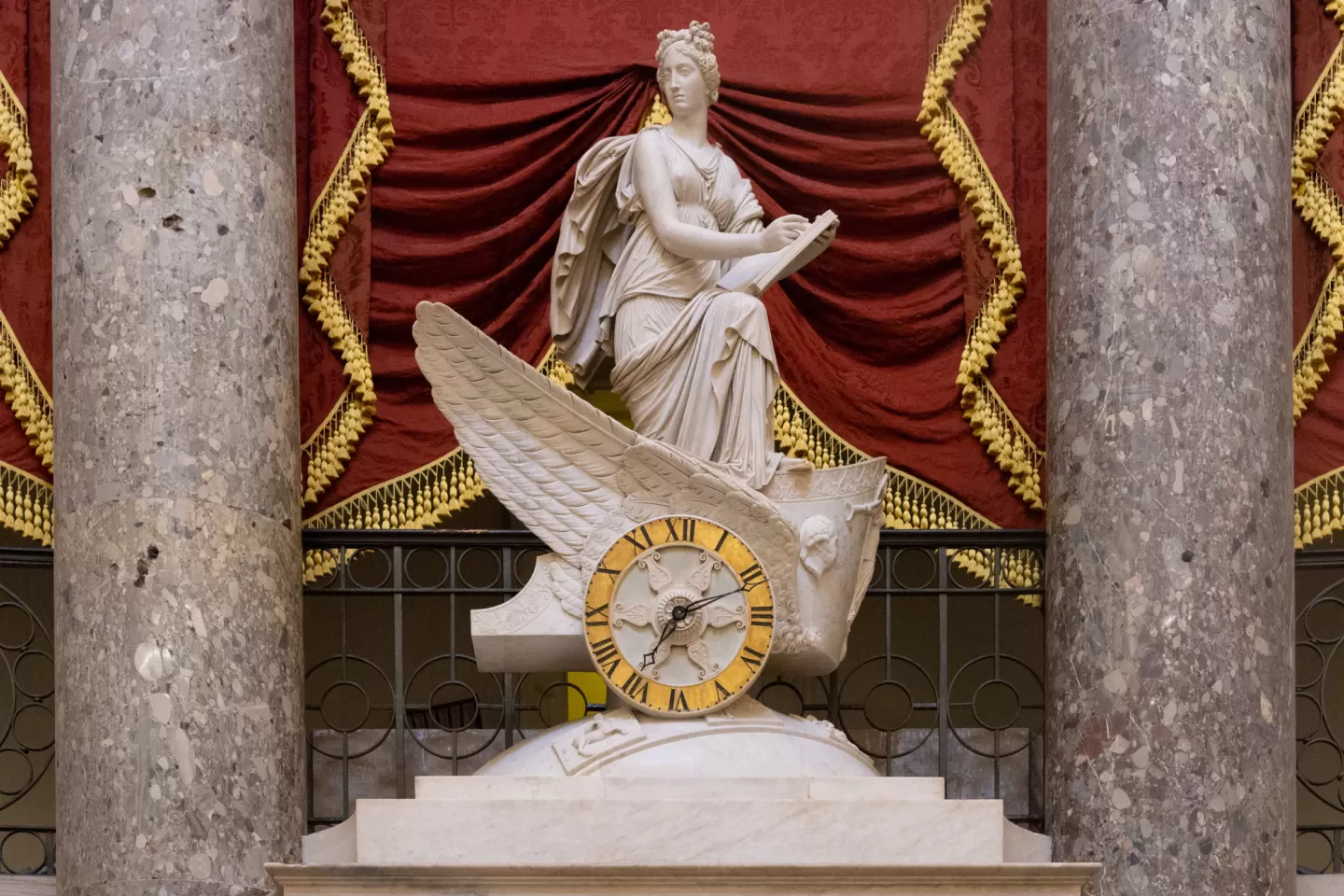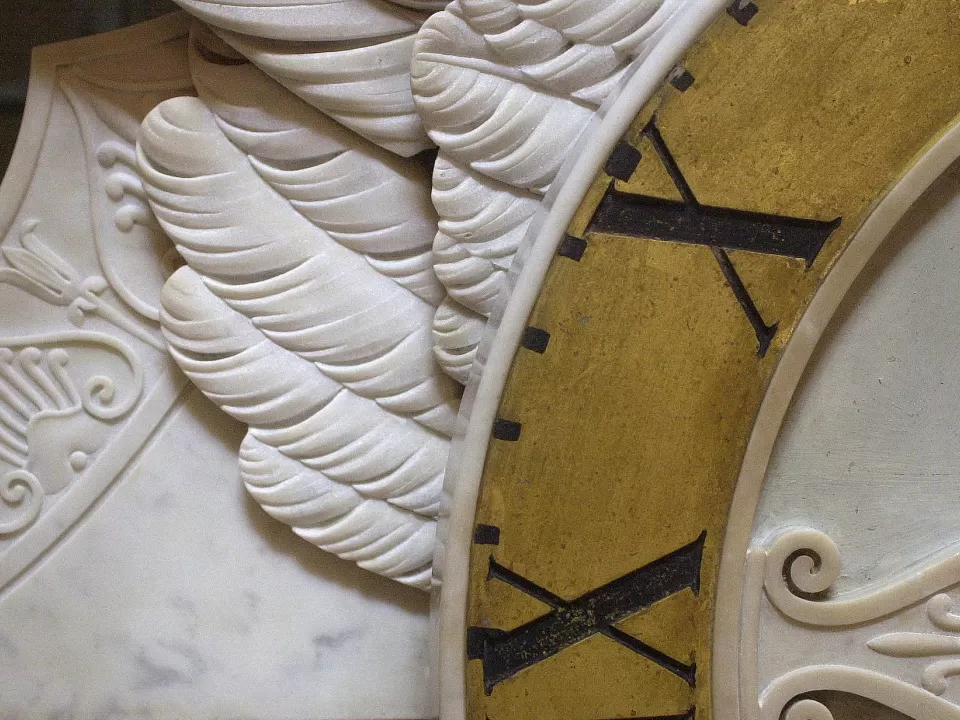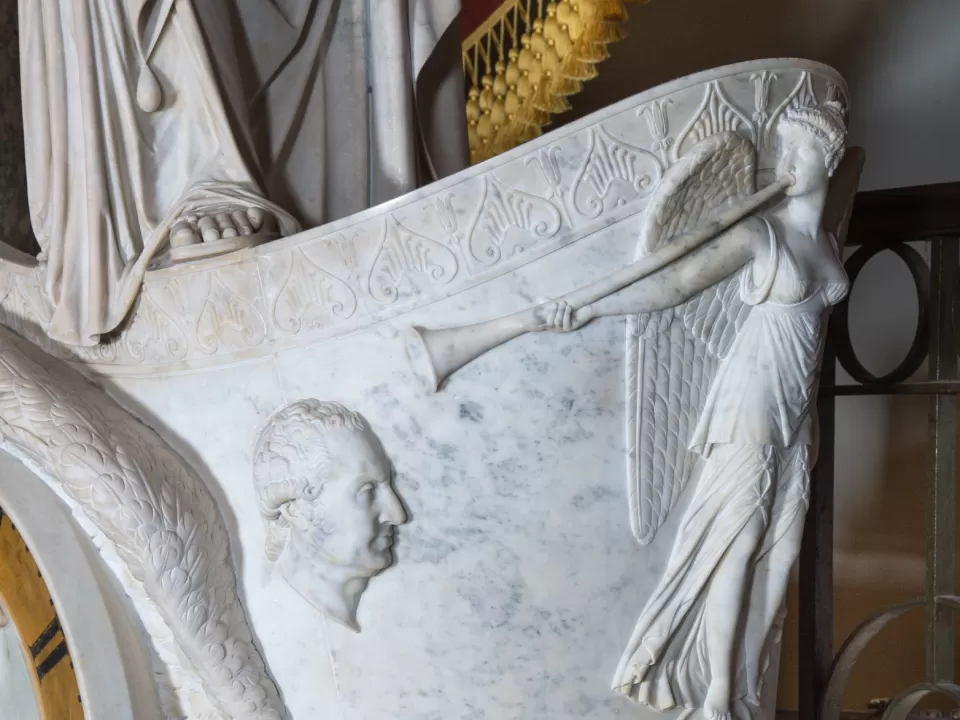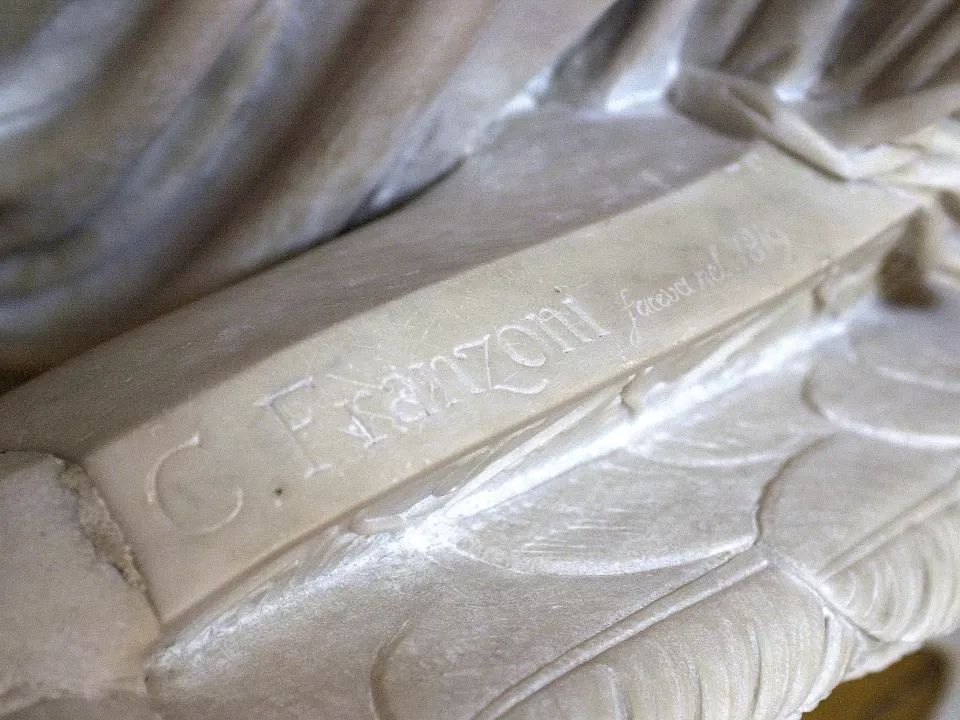Clio, the Greek Muse of History, is depicted standing in her winged chariot, or car. The car is traveling from west to east and her body is facing south, with her left foot resting on the edge of the car; her head is turned to look over her right shoulder, observing the events of the past. Her left hand holds a book (the modern version of the scroll or tablet with which she was depicted in classical times). Her right hand rests upon the book, and the position of her fingers suggests that at some time she held a pen; several early books and articles specifically refer to her holding one, but no photographs have been found that show it, and its loss or removal does not appear to have been documented.
On the front of the car is a winged Nike, the goddess of victory, who blows a trumpet of fame that she holds in her right hand; in her left she holds a palm branch, a symbol of victory or peace traditionally associated with her. A profile bust of George Washington appears on the side of the car below Clio's foot.
The car's wheel is the face of a clock, with the black painted roman numerals set within a gilded band; it rests on a partial globe decorated with the zodiac signs Sagittarius, Aries and Aquarius (comprising the months that the Congress was in session but, surprisingly, out of sequence). The sculptor's inscription, "C. Franzoni Faciebat 1819," appears on the top edge of the car's side above the wheel and can be seen only from above.
The statue was carved from at least five pieces of Carrara marble, chiseled separately and then joined together with iron bars covered in plaster. It stands about seven and a half feet tall, with Clio depicted at approximately human size. The brass and steel mechanism of the clock is housed in a wooden box at the rear of the sculpture and is signed "Simon Willard and Son." Samuel F. B. Morse's 1822 painting depicting the House of Representatives chamber shows a clock-face as part of the completed sculpture, but records indicate that the current Willard clock was installed around 1835.
The Car of History was created by Carlo Franzoni, born into a family of sculptors in Cararra, Italy. His older brother, Giuseppe, was a sculptor who had come to the United States and worked at the Capitol until his untimely death, and in 1816 Carlo came to take his place at the government's request. Franzoni family lore maintains that the model for Clio was Carlo's niece (likely Giuseppe's daughter). Franzoni completed the Car of History shortly before his death from heart complications in May 1819.
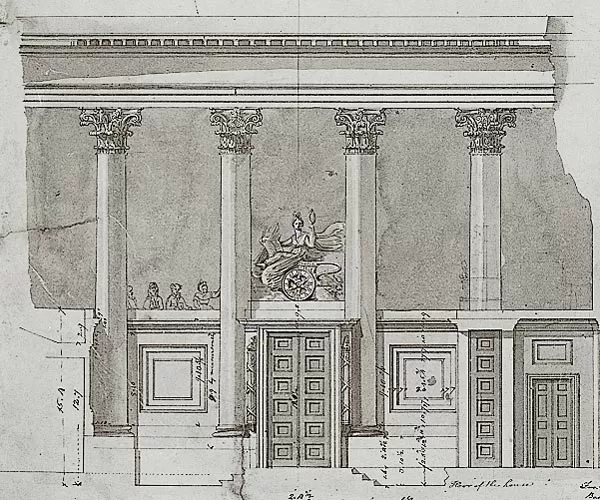
A design for the sculpture first appears in an August 1815 drawing by architect Benjamin Henry Latrobe. The drawing shows his proposal for rebuilding the former Hall of the House of Representatives, which was destroyed when British troops burned the Capitol in 1814 during the War of 1812. Latrobe's drawing of the sculpture differs from Franzoni's completed version in several ways: that car is traveling from east to west; Clio is seated rather than standing, with her left leg extended forward over the car’s wing; and she holds a mirror in addition to a pen. Latrobe may have been inspired by Empire mantel clocks, which also feature Roman-style chariots with clock face wheels and are often combined with mythological figures; however, Latrobe's creative solution of literally wedding time with history on a monumental scale appears to be unprecedented.
The statue and the clock have both undergone periodic restoration, and conservation has consisted chiefly of removing grime and stains. Some small repairs and replacements have also been made to the clock mechanism.
